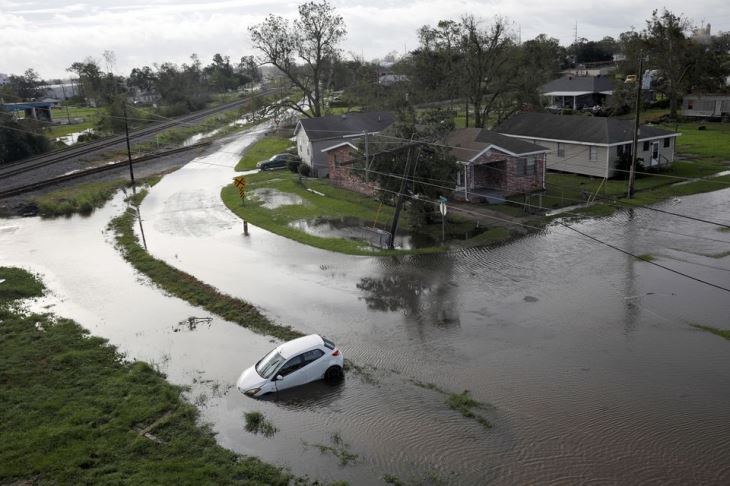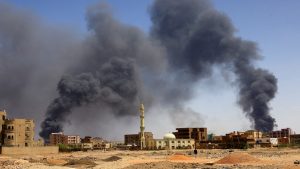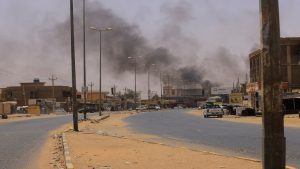At least one million people remain without power in the US State of Louisiana in the aftermath of Hurricane Ida that has also impacted petrol and water supplies in the region.
Ida made landfall on Sunday as a Category 4 storm, bringing sweeping rains and packing winds of over 200km per hour – toppling electrical transmission lines, overwhelming water treatment plants while causing petrol stations to be inundated as people searched for fuel.
And with searing temperatures in the region, the situation on the ground is dire.
Flattened and flooded is what an aerial view provides over the Greater New Orleans region. Evidence of the sheer ferocity of Ida that while not as devastating as Hurricane Katrina 16 years ago, has left an indelible mark on the region.
The home of 70-year Theophilus Charles is a shell of itself, walls sheared and the roof blown off.
“I was born here, we went through all the major hurricanes here. So, I figure I’ll stay here and ride this one out but I couldn’t. Things just started falling apart, blowing away. I ain’t got a dry spot in the house. My roof fell, I lost all my clothes, my furniture, my appliances, everything. Right now I’ve got nothing. ”
Hurricane Ida comes as the region is dealing with the third-highest rate of new coronavirus infections:
Night curfew
New Orleans, the largest city in the state, imposed a night-time curfew to prevent crime and looting after catastrophic transmission damage left much of the city without power – as some 25 000 utility workers laboured to bring the city back online.
President Joe Biden earlier declared the state a major disaster area.
“We’ve been working with the electric sector throughout the night and all day today to assess and understand the full extent of the damage. To accelerate the process, I’ve asked the Federal Aviation Administration to work today with Louisiana and Mississippi electric companies to authorize the use of surveillance drones to assess items damage to energy infrastructure while ensuring those flights do not disrupt aerial search and rescue operations.”
High temperature
Searing temperatures in the region above 30 degrees Celsius coupled with high humidity has made the absence of electricity felt more acutely with long queues wrapped around blocks in some places as people waited for fuel to power generators, while neighbours shared swimming pool water to flush toilets and even bathe. As authorities scrambled to open cooling centres, providing water and ready-to-go meals while urging those who evacuated, not to return to their homes quite yet.
“It looks like a bomb dropped. It’s going to take a very long time for us to get back to the way things were if we even can,” says resident Jill Galliano.
Another resident Matt Koontz says; “Ida made Katrina look like a warm summer breeze. I was not anticipating, this is craziness what happened.”
Climate change
As the United Nations again warns that disasters brought on by natural events like Ida have increased fivefold over the past 40 years – driven by climate change.
“The number of affected people in economic loss is getting higher and higher because of the increase in frequency and intensity of extreme weather events and climate change and we have seen this year alone, during this summer, in the month of July, which was the hottest since record began, there were heat waves and there were floods, so, we are not, unfortunately in a safe place and the report tells us that the 50-year trend is quite alarming,” says Secretary General’s Special Representative for Disaster Risk Reduction Mami Mizutori.
The National Hurricane Centre is already monitoring Tropical Storm Larry off Africa’s West Coast expected to become a major hurricane before the weekend.






